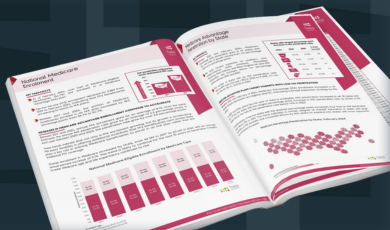As an HME provider, you likely have physicians you regularly work with in the healthcare industry. However, are you actively working on maximizing those relationships?
You can enhance your level of care by showcasing your offering of additional HME products and services to your existing customers while increasing your bottom line.
In this article, we will discuss how to:
- Understand your existing HME referrals
- Build a strong relationship with current physician referral sources
- Utilize the right tools and technology to cross-sell efficiently and effectively
We understand this topic was covered briefly in a previous blog. However, this is an important topic, and we want to ensure you have all the tools available to grow your relationships with existing referral sources by utilizing market data.
Understanding your existing HME referrals
Before your reps can start cross-selling to your existing referrals, your team needs to understand the physician’s wants and preferences.
While finding new partners is expected — focusing on current relationships with your physicians, finding new opportunities, and growing your book of business with them is necessary.
So, how do you go about finding more information about your current referral sources? Let’s look at an example:
One of your reps is seeking more information on their closest physician, Dr. Jones. With a data intelligence platform, the rep can view Dr. Jones’ profile in detail to understand the volume per type of prescription he writes, and then, your rep might see that Dr. Jones not only orders for mobility — but for CPAP equipment as well.
With this knowledge, your rep could look over Dr. Jones’ account, see who he is referring orders to, and speak to him about the opportunity to work with your organization for mobility and CPAP equipment. Therefore, this is the chance to showcase the additional value your organization can bring to him and further strengthen your relationship with this physician.
How to build strong relationships with referral sources
Now that your sales rep has identified a new opportunity with an existing referral source, they must continue to build a strong relationship with that physician. One of the keys to success in building a solid and successful relationship is maintaining constant communication with your referral sources.
By staying in touch regularly, your sales reps can ensure your organization is top of mind when your referrals need HME equipment. In addition, when your team provides excellent service and support, they build trust and loyalty with their referral sources.
Showcasing your organization’s unique value is another important aspect of building a solid relationship with referral sources. Continuing from the previous example, if your rep wants to find more information on Dr. Jones, a data intelligence platform can help. Your rep can view Dr. Jones’ profile in detail, including “order-share by organization” for mobility and CPAP equipment.
This information will allow your team to understand what other organizations are fulfilling scripts for Dr. Jones, in addition to yours. It will enable you to benchmark against your competition and provide the opportunity to increase the physician’s orders that your organization is fulfilling. Thus, increasing the likelihood of retaining him as a long-term referral source.
This type of targeted insight can help demonstrate the value of your services and build trust with your referral sources.
Utilizing the right tools and technology
Implementing the right tools and technology will help give you deeper insights and a better understanding of the HME market and your existing referral sources.
Integrating your organization’s CRM with an EHR system can give your sales reps a comprehensive view of patients’ needs, insurance, and other relevant information — thus making it easier to identify opportunities and provide personalized service. In addition, this information can help your reps tailor their conversations for each referral source and better understand the physician’s patient base.
Effective management tools are essential for maximizing productivity and logging activities in the field. With a mobile-first CRM, reps can easily log interactions with referral sources, manage their schedules, and track expenses on the go. In addition, coupling market data and your CRM can help organize your touchpoints and activities with referral sources, giving you historical insights and a documented trail of activities.
 Did you happen to know? According to Zippia, “65% of salespeople who use mobile CRM meet their sales quotas as opposed to 22% who don’t use mobile CRM.”
Did you happen to know? According to Zippia, “65% of salespeople who use mobile CRM meet their sales quotas as opposed to 22% who don’t use mobile CRM.”
The power of this technology is exemplified by Will Barry, an Account Executive at Prism Health Care Services, who uses the integration of orders received from the day before and data analysis to target new areas.
When asked what efficiencies he has seen in using a CRM, he stated:
“Checking the integration of orders received from the day before and seeing what orders we received. Then, using the data to target new areas. When you are trying to tweak your schedule, that’s when this information is used the most. I can use the CRM out in the field on mobile, or I can use it for my planning the night before. If I go into a physician group and somebody I want to talk to isn’t there, I can pull up Trella and find another physician in the same area on the fly to visit them.”
Smarter growth. Healthier outcomes.
Building a solid relationship with referral sources and understanding their needs can lead to new cross-selling complementary products and services opportunities.
Effective communication, excellent service and support, and the right tools and technology are all critical elements of this strategy.
With the right approach, your organization can enhance patient care and boost your bottom line through cross-selling opportunities with existing referral sources.
Want to learn more about enhancing relationships with your referral sources?














